-
 Bitcoin
Bitcoin $107,631.9817
-1.73% -
 Ethereum
Ethereum $2,739.1787
-4.61% -
 Tether USDt
Tether USDt $1.0000
-0.01% -
 XRP
XRP $2.2427
-3.30% -
 BNB
BNB $664.0527
-0.73% -
 Solana
Solana $158.0902
-5.38% -
 USDC
USDC $0.9998
-0.01% -
 Dogecoin
Dogecoin $0.1876
-7.78% -
 TRON
TRON $0.2753
-3.21% -
 Cardano
Cardano $0.6820
-5.55% -
 Hyperliquid
Hyperliquid $43.0171
-0.38% -
 Sui
Sui $3.3308
-4.87% -
 Chainlink
Chainlink $14.3431
-7.89% -
 Avalanche
Avalanche $21.0266
-6.48% -
 Bitcoin Cash
Bitcoin Cash $437.7657
-1.56% -
 Stellar
Stellar $0.2746
-2.52% -
 UNUS SED LEO
UNUS SED LEO $8.8665
-1.96% -
 Toncoin
Toncoin $3.1885
-3.37% -
 Shiba Inu
Shiba Inu $0.0...01260
-6.84% -
 Hedera
Hedera $0.1686
-4.93% -
 Litecoin
Litecoin $88.8406
-5.16% -
 Polkadot
Polkadot $4.0542
-6.28% -
 Monero
Monero $322.5806
-4.20% -
 Ethena USDe
Ethena USDe $1.0004
-0.02% -
 Bitget Token
Bitget Token $4.7089
-3.10% -
 Dai
Dai $0.9998
-0.01% -
 Pepe
Pepe $0.0...01206
-9.06% -
 Uniswap
Uniswap $7.8694
-5.20% -
 Pi
Pi $0.6232
-2.68% -
 Aave
Aave $301.3815
-3.83%
How to analyze the chip distribution chart? Can the main cost be identified when combined with the volume?
The chip distribution chart, combined with volume data, helps identify key support and resistance levels in cryptocurrency markets, aiding traders in making informed decisions.
Jun 10, 2025 at 03:29 am
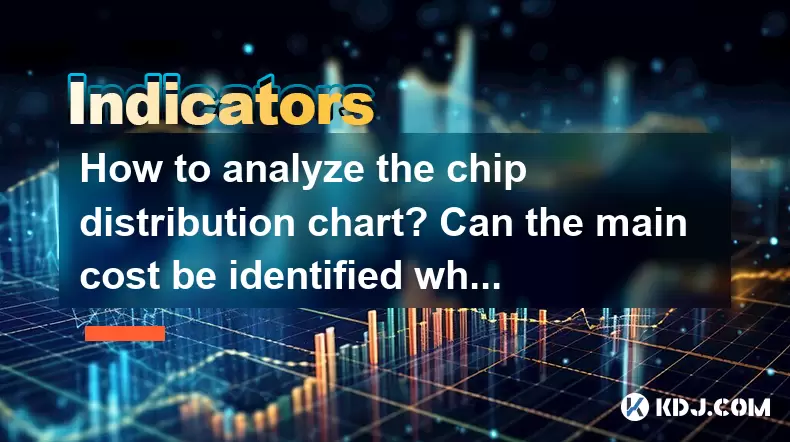
Analyzing the chip distribution chart is a crucial aspect of understanding market dynamics in the cryptocurrency sphere. The chip distribution chart, also known as the cost distribution chart, helps traders and investors to see at what price levels the majority of the 'chips' or coins were accumulated. By understanding this distribution, one can infer potential support and resistance levels, as well as the main cost area where most of the holders bought their cryptocurrency. When combined with trading volume data, it becomes possible to identify the main cost more accurately, providing deeper insights into market sentiment and potential price movements.
Understanding the Chip Distribution Chart
The chip distribution chart is a graphical representation that shows the distribution of the holding cost of a cryptocurrency among its holders. Each 'chip' represents a unit of the cryptocurrency, and the chart plots the number of chips against the price at which they were bought. This chart is essential because it reveals where the majority of the holders have their break-even points, which can act as significant support or resistance levels.
To read a chip distribution chart, look for peaks and troughs. Peaks indicate price levels where a large number of chips were bought, suggesting strong support or resistance at those levels. Troughs, on the other hand, indicate price levels with fewer chips, suggesting weaker support or resistance.
Identifying the Main Cost
The main cost is the price level at which the largest number of chips were accumulated. This level is crucial because it represents the average cost of the majority of the holders. If the price falls below this level, many holders might sell to cut their losses, leading to increased selling pressure. Conversely, if the price rises above this level, holders may feel more confident, potentially leading to increased buying pressure.
To identify the main cost, focus on the highest peak in the chip distribution chart. This peak represents the price level with the most significant concentration of chips. It is often referred to as the 'cost center' or 'main cost zone.'
Combining Chip Distribution with Volume Data
Volume data is essential for validating the significance of the main cost identified on the chip distribution chart. High trading volume at the main cost level suggests strong interest and activity at that price, reinforcing its importance as a key support or resistance level. Conversely, low volume at the main cost level might indicate that the level is less significant than it appears on the chip distribution chart alone.
To combine chip distribution with volume data, follow these steps:
- Identify the main cost on the chip distribution chart.
- Overlay the volume data on the price chart.
- Check the volume at the main cost level. Look for periods of high volume that coincide with the main cost.
- Analyze the volume trend around the main cost. Increasing volume as the price approaches the main cost can indicate strong interest and potential price action at that level.
Practical Application of Chip Distribution and Volume Analysis
In practice, traders use the chip distribution chart and volume data to make informed decisions about entry and exit points. For example, if the main cost is identified at a certain price level and there is high volume at that level, a trader might consider this a strong support level and enter a long position near this price, expecting the price to hold and potentially rebound.
Conversely, if the price approaches the main cost from above and there is significant volume at this level, it might indicate a strong resistance level. A trader might consider this an opportunity to enter a short position, expecting the price to struggle to break through this level.
Case Study: Analyzing a Cryptocurrency's Chip Distribution and Volume
Let's consider a hypothetical example of a cryptocurrency called 'CryptoX'. The chip distribution chart for CryptoX shows a significant peak at $50, indicating that a large number of chips were bought at this price. This suggests that $50 is the main cost for CryptoX.
To validate this, we overlay the volume data on the price chart of CryptoX. We observe that there is a notable spike in trading volume around the $50 price level, confirming that this is indeed a significant level for the market participants.
With this information, a trader might decide to buy CryptoX near the $50 level, expecting it to act as a strong support level. If the price holds above $50 and the volume remains high, it could signal a potential upward move. Alternatively, if the price breaks below $50 on high volume, it might indicate a breakdown of the support level, prompting the trader to exit the position or even consider a short position.
Using Technical Indicators with Chip Distribution and Volume
While the chip distribution chart and volume data provide valuable insights, they can be further enhanced by using technical indicators. For instance, combining the chip distribution chart with indicators like the Moving Average Convergence Divergence (MACD) or the Relative Strength Index (RSI) can help confirm trends and potential reversal points.
For example, if the chip distribution chart shows a main cost at $50 and the volume data confirms high activity at this level, a trader might look for additional confirmation from the MACD. If the MACD shows a bullish crossover near the $50 level, it could strengthen the case for a potential upward move.
Limitations and Considerations
While analyzing the chip distribution chart and volume data can provide valuable insights, it is important to consider the limitations of this approach. Market conditions can change rapidly, and past data does not always predict future movements. Additionally, external factors such as news events or regulatory changes can impact cryptocurrency prices, potentially overriding the signals provided by the chip distribution and volume data.
It is also crucial to use this analysis as part of a broader trading strategy, incorporating other forms of analysis and risk management techniques. No single method can guarantee success in the volatile world of cryptocurrency trading.
Frequently Asked Questions
Q: Can the chip distribution chart be used for all cryptocurrencies?
A: Yes, the chip distribution chart can be used for any cryptocurrency that has sufficient trading data available. However, the accuracy and usefulness of the chart may vary depending on the liquidity and trading volume of the specific cryptocurrency.
Q: How often should the chip distribution chart be updated?
A: The chip distribution chart should be updated regularly, ideally on a daily or weekly basis, to reflect the latest trading data and changes in market dynamics. Frequent updates help traders stay informed about shifts in the main cost and other significant levels.
Q: Are there any tools or platforms that provide chip distribution charts?
A: Yes, several trading platforms and analytical tools offer chip distribution charts. Some popular platforms include TradingView, which allows users to overlay chip distribution data on price charts, and specialized cryptocurrency analysis tools like CoinGlass, which provide detailed chip distribution charts for various cryptocurrencies.
Q: Can the chip distribution chart be used to predict long-term price movements?
A: While the chip distribution chart can provide insights into potential support and resistance levels, it is not a reliable tool for predicting long-term price movements on its own. Long-term price movements are influenced by a wide range of factors, including market sentiment, technological developments, and regulatory changes. The chip distribution chart should be used in conjunction with other forms of analysis for a more comprehensive understanding of market trends.
Disclaimer:info@kdj.com
The information provided is not trading advice. kdj.com does not assume any responsibility for any investments made based on the information provided in this article. Cryptocurrencies are highly volatile and it is highly recommended that you invest with caution after thorough research!
If you believe that the content used on this website infringes your copyright, please contact us immediately (info@kdj.com) and we will delete it promptly.
- Expert Predicts When Bitcoin (BTC) Price Could Hit a New All-Time High
- 2025-06-13 02:00:20
- US President Donald Trump Virtually Spoke at the Coinbase State of Crypto Summit
- 2025-06-13 02:00:20
- Arctic Pablo Coin (APC) Explodes Onto the Meme Coin Stage as One of the Top New Meme Coins for Exponential Returns
- 2025-06-13 01:55:12
- Litecoin (LTC) Price Nosedives as Bollinger Bands Signal Lingering Bearish Sentiment
- 2025-06-13 01:55:12
- DeFi Development Corp. (DFDV) Secures $5 Billion Equity Line of Credit from RK Capital Management
- 2025-06-13 01:50:12
- Tether Expands Gold Strategy with Stake in Elemental Altus Royalties
- 2025-06-13 01:50:12
Related knowledge
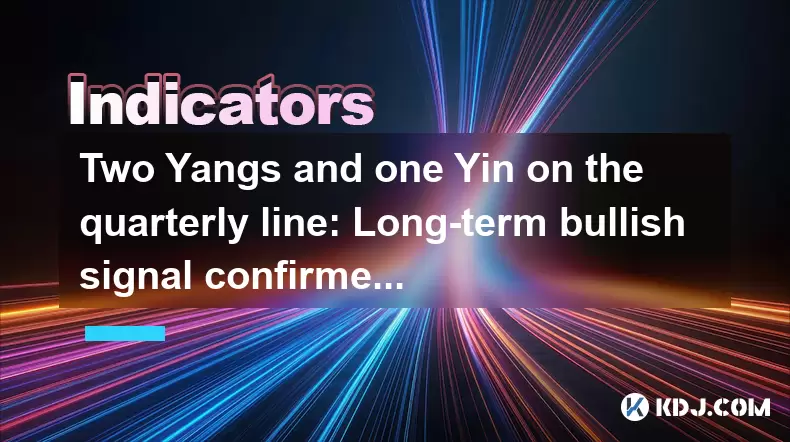
Two Yangs and one Yin on the quarterly line: Long-term bullish signal confirmed?
Jun 12,2025 at 07:00am
Understanding the 'Two Yangs and One Yin' Candlestick PatternIn technical analysis, candlestick patterns play a pivotal role in identifying potential market reversals or continuations. The 'Two Yangs and One Yin' pattern is one such formation that traders often observe on longer timeframes like the quarterly chart. This pattern consists of two bullish (...
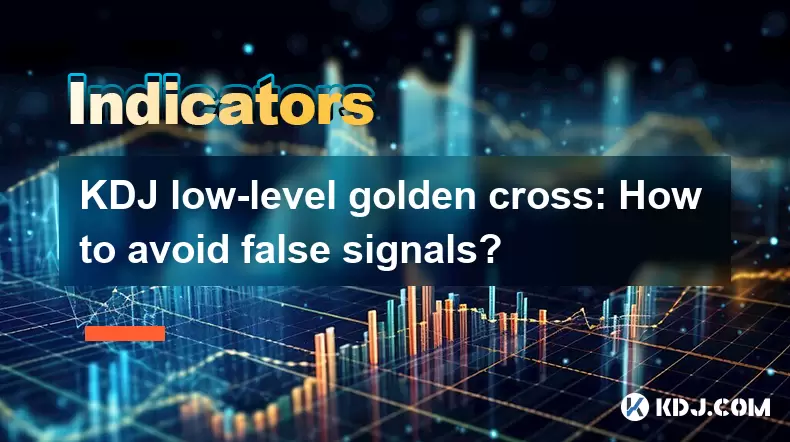
KDJ low-level golden cross: How to avoid false signals?
Jun 12,2025 at 08:21am
Understanding the KDJ IndicatorThe KDJ indicator, also known as the stochastic oscillator, is a momentum-based technical analysis tool widely used in cryptocurrency trading. It consists of three lines: the %K line (fast stochastic), the %D line (slow stochastic), and the %J line (divergence value). These lines oscillate between 0 and 100, helping trader...

Bottom-up volume stagnation: Is it accumulation or heavy selling pressure?
Jun 12,2025 at 01:42pm
What Is Bottom-Up Volume Stagnation?Bottom-up volume stagnation refers to a specific pattern observed in cryptocurrency trading charts where the price of an asset moves sideways or slightly downward, and trading volume remains consistently low over an extended period. This phenomenon is often seen after a sharp price drop or during a prolonged bear mark...
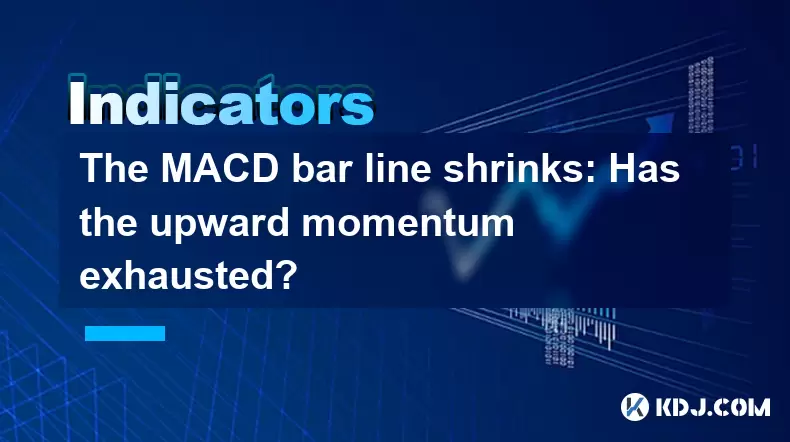
The MACD bar line shrinks: Has the upward momentum exhausted?
Jun 12,2025 at 12:49am
Understanding the MACD Bar LineThe Moving Average Convergence Divergence (MACD) is a widely used technical indicator in cryptocurrency trading. It consists of three main components: the MACD line, the signal line, and the MACD histogram (also known as the bar line). The MACD bar line represents the difference between the MACD line and the signal line. W...

The chip peak moves up: Is the main force quietly shipping?
Jun 12,2025 at 01:01am
Understanding the Chip Peak Movement in Cryptocurrency MiningIn recent years, the chip peak movement has become a critical topic within the cryptocurrency mining community. This phrase typically refers to the point at which mining hardware reaches its maximum efficiency and output capacity. When this peak shifts upward, it often signals changes in the s...
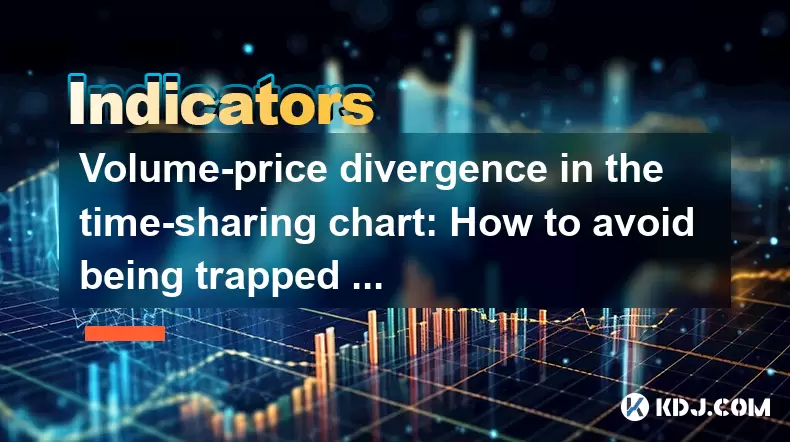
Volume-price divergence in the time-sharing chart: How to avoid being trapped on the same day?
Jun 12,2025 at 07:28pm
Understanding Volume-Price Divergence in Cryptocurrency TradingVolume-price divergence is a critical concept in technical analysis, especially within the fast-moving world of cryptocurrency trading. It refers to a situation where price movement and trading volume move in opposite directions. For instance, if the price of a cryptocurrency is rising while...

Two Yangs and one Yin on the quarterly line: Long-term bullish signal confirmed?
Jun 12,2025 at 07:00am
Understanding the 'Two Yangs and One Yin' Candlestick PatternIn technical analysis, candlestick patterns play a pivotal role in identifying potential market reversals or continuations. The 'Two Yangs and One Yin' pattern is one such formation that traders often observe on longer timeframes like the quarterly chart. This pattern consists of two bullish (...

KDJ low-level golden cross: How to avoid false signals?
Jun 12,2025 at 08:21am
Understanding the KDJ IndicatorThe KDJ indicator, also known as the stochastic oscillator, is a momentum-based technical analysis tool widely used in cryptocurrency trading. It consists of three lines: the %K line (fast stochastic), the %D line (slow stochastic), and the %J line (divergence value). These lines oscillate between 0 and 100, helping trader...

Bottom-up volume stagnation: Is it accumulation or heavy selling pressure?
Jun 12,2025 at 01:42pm
What Is Bottom-Up Volume Stagnation?Bottom-up volume stagnation refers to a specific pattern observed in cryptocurrency trading charts where the price of an asset moves sideways or slightly downward, and trading volume remains consistently low over an extended period. This phenomenon is often seen after a sharp price drop or during a prolonged bear mark...

The MACD bar line shrinks: Has the upward momentum exhausted?
Jun 12,2025 at 12:49am
Understanding the MACD Bar LineThe Moving Average Convergence Divergence (MACD) is a widely used technical indicator in cryptocurrency trading. It consists of three main components: the MACD line, the signal line, and the MACD histogram (also known as the bar line). The MACD bar line represents the difference between the MACD line and the signal line. W...

The chip peak moves up: Is the main force quietly shipping?
Jun 12,2025 at 01:01am
Understanding the Chip Peak Movement in Cryptocurrency MiningIn recent years, the chip peak movement has become a critical topic within the cryptocurrency mining community. This phrase typically refers to the point at which mining hardware reaches its maximum efficiency and output capacity. When this peak shifts upward, it often signals changes in the s...

Volume-price divergence in the time-sharing chart: How to avoid being trapped on the same day?
Jun 12,2025 at 07:28pm
Understanding Volume-Price Divergence in Cryptocurrency TradingVolume-price divergence is a critical concept in technical analysis, especially within the fast-moving world of cryptocurrency trading. It refers to a situation where price movement and trading volume move in opposite directions. For instance, if the price of a cryptocurrency is rising while...
See all articles

























































































